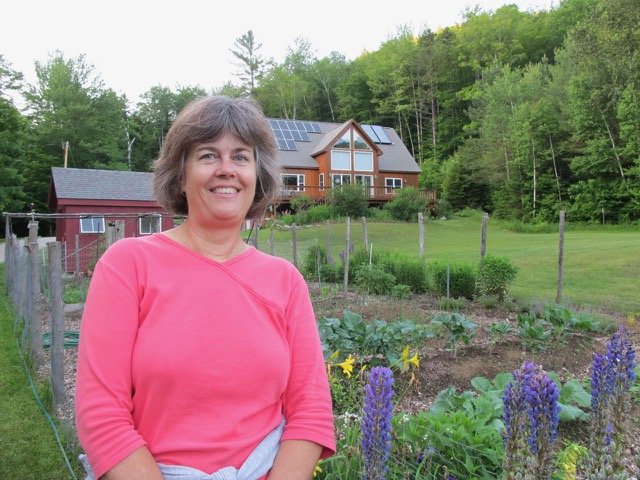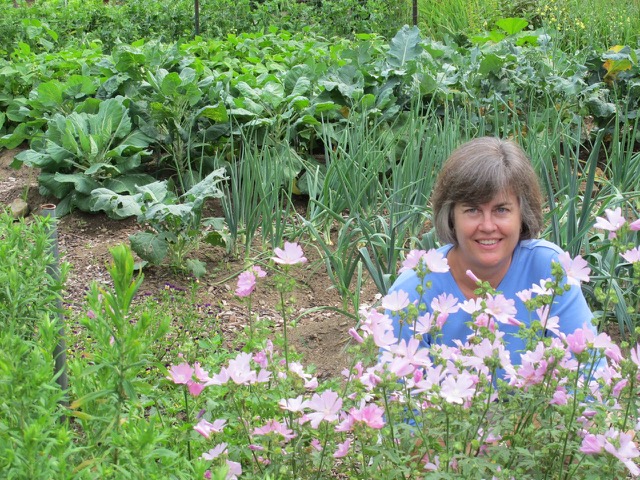Despite downsizing, Nancy Wolff isn’t done homesteading yet
Life’s changes can mean changes for our homesteading lifestyle. No one knows that better than Nancy Wolff.

After nearly a decade blogging at Nancy on the Home Front from her homestead in Vermont — which she designed with her husband to be heated and powered using mostly solar energy — Wolff and her husband have recently relocated to the Pacific Northwest to be closer to their children and grandchildren. They are still looking for their next homestead, but the time between one homestead and next has allowed Wolff to reflect her journey.
In our conversation with Wolff for our Behind the Homestead Blog series, she told us about building a solar-powered homestead, relocating to the West Coast and her start on a sheep farm in Nova Scotia.
Hello Homestead: Tell me about your background. Where are you from, and what did you do before you started homesteading?
Nancy Wolff: I was born and raised in Connecticut. My mother always gardened and had a vegetable garden, so gardening and preserving the harvest was something I thought everyone did.
When I was in high school, I spent a month on my uncle’s farm. It was quite remote and eventually became one of the largest sheep farms in Nova Scotia. We worked all day everyday bringing the hay in or weeding the garden. The meals were always prepared from what was raised on the farm. Nothing was wasted; scraps went to the pigs. Bread was made at home, very little was store bought.
I was so impressed by their simple lifestyle. Although it was hard work I loved my summer on the farm and couldn’t wait to grow up and live the same way.
I studied biology in college and ended up working for a veterinarian when I graduated and got married. After moving around for many years, we eventually ended up in Vermont. It was there that we could finally pursue our dream of homesteading.
HH: What were your first homesteading projects?
NW: When we finally ended up living in Vermont and had land enough for large gardens we decided to raise chickens. My husband built not just a chicken coop, but a chicken palace. It was beautiful and housed our chickens for many years.
We had enough chickens to provide eggs for our family and sold the extras to the neighbors. We had other neighbors down the street that would raise beef cattle and pigs so we didn’t feel the need to raise them ourselves. We did, however, decide to raise meat birds.
We also raised bees for many years. We lived in the mountains and it was not easy keeping bees, but we had nine hives at one point and enjoyed the honey and beeswax.
HH: When and why did you decide to start your blog?
NW: A number of years after we built our house, my husband was hired by the company that built our house. They not only wanted to get people interested in putting solar on their homes and building energy efficient homes, they also wanted people to live a more prudent life.
They hired me to start a blog, which I called On The Home Front. I wrote about gardening, creating a pantry, frugal tips and recipes. Eventually their business model changed and we parted ways, but I wanted to continue my blog, so I slightly changed the name to Nancy On The Home Front. I started my blog over eight years ago and continue it today.
HH: Tell me about your homestead in Vermont, which you designed to run on solar energy. How did you go about designing it?
NW: My husband designed our home and we wanted it to fit into the land. We designed our home to function at a passive-solar level by positioning the majority of windows to face the southern sun. We typically saw interior temperatures reaching 80ºF on sunny winter days. Adding a good overhang to the roof helped keep the home cooler in the summer by creating shade on the windows.
Solar photovoltaic panels offset the electric demands. This system was grid-tied, meaning we still received power from the public electric company, but our system sent back power to the electric company’s grid when it generated more energy than our home used. On those days we could watch our electric meter spin backwards!
We used liquid propane to heat our water, as a backup fuel for the furnace, to dry clothes, and to cook with. By adding the solar hot water panels to the home, we saw the propane usage drop from a high of close to 1,000 gallons a year to a low of just under 600 gallons per year. Do the math on the cost per gallon of propane, and this system paid for itself in just a few years!
A wood stove was used as the primary heat source for the home. Heating your home with wood required some planning for the demands of a Vermont winter! The working plan for us was to have at least 2 years of wood stacked – one year’s worth to burn and one year’s worth set aside drying.
HH: What are the biggest challenges and benefits of running a homestead on solar energy?
NW: Since we were grid tied, we didn’t face many of the challenges you might face being totally off-grid. We had the benefit of low energy bills, but didn’t have to worry about servicing batteries, or depending on a generator for cloudy seasons.

HH: You recently left your Vermont homestead. Why did you make that decision?
NW: The decision to leave Vermont was one of the hardest decisions we have ever made. We had a beautiful home on 56 acres, and the land itself had been in the family for many years.
However, it was a lot of work. As we began to reach retirement age we took a hard look at how much longer we would be able to invest the time and energy needed to maintain the property.
Our four grown children were also all living on the West Coast and had no plans to move back to the East Coast. We wanted to be a part of our three grandchildren’s lives. So, three years ago we decided to put our home on the market and make a cross-country move.
We [will] more than likely become urban homesteaders. Life is short and we wanted to make the move while we were still “young” enough to enjoy an active lifestyle.
HH: How did it feel to leave the work you had done in Vermont behind?
NW: We knew it would not be a lateral move financially and we would have to downsize considerably. What made it even harder was that it took almost two and a half years to sell our home, and the people that purchased the house would be using it as a second home. I’m sure they had no interest in the gardens or berry bushes. This made us so sad.
HH: Now, you are looking for your next home in the Pacific Northwest. What is the biggest difference between the two areas?
NW: The Pacific Northwest has a much longer growing season! I can look forward to at least a month on either end of the short Vermont growing season.
The areas around Seattle, Washington, and Portland, Oregon, where we are looking at real estate are growing at an incredible pace. Our home took two and a half years to sell, and during that time we had less than 20 people come look at the house! Here, houses come on the market and often sell within a week or even the same day.
HH: What do you recommend to homesteaders making a similar transition?
NW: Before making a cross country move, I would strongly encourage you to spend a month or two in the area you plan to live in. In 2015, we spent two months in a rental just to see if we could imagine ourselves in this part of the country. We really don’t miss the snow and all the shoveling that goes with keeping a home clear of snow in the Vermont weather.
HH: You are currently renting. How do you continue practicing homesteading skills when you are not living on a homestead?
NW: We are renting a very small one-bedroom apartment from one of our daughters. She had four large raised beds in her backyard. If we are still living in the apartment during this growing season, I will be helping her with her garden. I also plan to have some raised pots outside our apartment where I plan to grow lettuce and other greens.
I am still making my own bread and granola and even did some jam making and canning over the Christmas season to give as gifts. We may not be living on a homestead on 56 acres, but we can still live with the same mindset.
HH: What do you hope for your future homestead?
NW: I would love to find a small home on an acre or so of land with sun enough to have a nice vegetable garden. Ideally, we would love to have a few chickens and even bees again if possible, and some berry bushes and a fruit tree or two.
One of the most exciting aspects of living near our grown children is that they want to learn the skills I know. I’m amazed that my daughter in law doesn’t know how to sew. There are so many skills that are just not being taught anymore and I look forward to teaching what I know to my daughters, daughter-in-law and our sons and son-in-laws!
Our future homestead will be quite different from our home in Vermont, but that’s ok. Hopefully we can find our own little bit of heaven here in the Pacific Northwest.
This Q&A was edited for clarity and length.

What a great article. I’ve known Nancy for a long time and have always admired her positive attitude. Recently however I think she brought the VT weather with her. We miss them here on the EastCoast but can’t wait to see their new digs when they get settled. Congratulations and best wishes for a successful rightsizing move.
What a great article Nancy your famous.